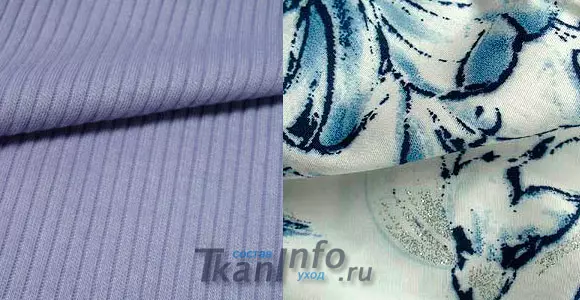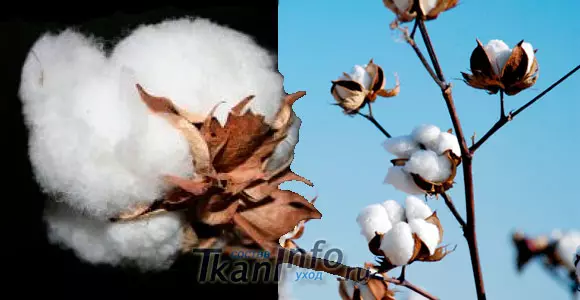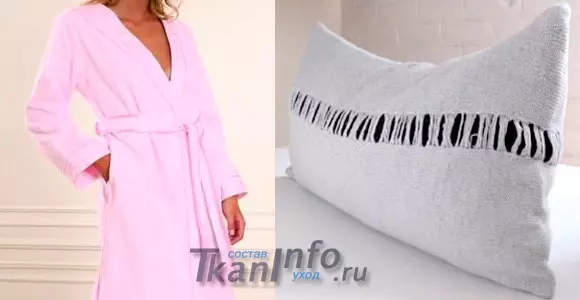Researchers believe that cotton was an economical for more than five thousand years ago . Shrub, which forms boxes filled with soft white fibers, grows in warm climatic zones of the whole globe. Cotton products were sold in Europe under the general Arabic name Qutun (beautiful fabric). This word was transformed into Cotton and became in English synonymous with cotton fibers and materials based on them.
History and terminology
The first varieties of cotton fabrics were invented in India. In Europe and Rus, they fell from afar and for a long time were very expensive. In the XIX century, due to the development of factory production, sitheria, satin, hazard, knees and other materials became massive. They were united by the common name "Cotton fabrics".
The term "Cotton", widely used in recent decades, is international. In a wide meaning, it refers to all materials, which includes only cotton-based threads (which is indicated on the commodity label - Cotton 100%).

Currently, this textile raw material is the most common and more than half of the world market. The total volume of its production is estimated at 25 million tons per year.
In a narrow sense, Cotton is called a rather dense walled and costume fabric, as well as knitwear. At the same time, this word is often used in relation to blended materials. For example, widespread stretch — Cotton contains in its composition Liker. It gives the canvas the ability to stretch, and the clothes stitched from it is to make a good figure, but such a fabric can no longer be called natural. Therefore, when buying, you should always pay attention not only to the name of the material, but also in detail the composition of the fibers of it in it.
Article on the topic: Origami Minecraft of paper: Schemes, how to make blocks with photos and videos
Classification of cotton fabrics
The main characteristics for which materials are divided into subgroups are as follows:
- method of obtaining yarn (comb, cardiac, hardware);
- density;
- Type of finish.
The highest quality has a combed yarn of long-fiber cotton, which is distinguished by strength and smoothness. The filaments of lower varieties are subjected to mercerization - treatment with soda solution, which improves their properties, gives shine, and also facilitates staining. In addition, the characteristics of the finished fabric can be improved by slugging, embossed, water-repellent and fire-resistant impregnations, etc. Standard width of the canvases - from 60 to 180 cm.
By the method of finishing, Cotton can be:
- harsh (from unnecessary yarn);
- bleached;
- smoothcast;
- melange and multicolored (from threads of different color);
- printed.

When selling, Cotton fabric is classified by its intended purpose. The main groups are:
- lounge (hawk, canvas, madapolam, chiffon, etc.);
- Dressevo Torn (Sitz, Satin , Caucasus, Poplin, Scotland, etc.);
- light dresses (battered, marquiset, veil, crepe);
- Winter (paper, bike, flannel);
- denim;
- terry;
- pile (velvet, plush and different types of velvet);
- Costly Cloak (Diagonal, Moleskin, Rez, Rogozhe, etc.);
- Lining (Chenkor, Sartah);
- mattress (tick);
- Furniture (tapestry, jacquard), etc.
It should be noted that this division is conditional. For example, Cotton — Satin, distinguished by durability and beautiful glitter, use for clothing, bed linen, interior decorations, as lining, etc. Foreign manufacturers often give cotton materials branded names, so about the belonging to the group can only be judged by the description of the composition and density.
Advantages and disadvantages
The composition of cotton includes clean cellulose and a small amount of water. This causes such characteristics such as:- good absorption of moisture (up to 12% of its own weight);
- rapid drying;
- hypoallergenicity;
- The ability to absorb pigments, fat and other components;
- softness;
- lack of damage to microflora (in dry form) and insects;
- air permeability;
- neutrality in relation to alkaline compounds;
- the ability to maintain heat;
- resistance to high temperatures;
- Sterilization ability.
Article on the topic: Openwork knitted blouse crochet with short sleeves 3/4
An undesirable feature of Cotton is its strong reinforceability and shrinkage under the influence of hot water. . Its property should be noted to ignite, especially light fabric, as well as the destruction of the threads under the action of acids, including fruit. However, naturalness, comfort, high cotton hygiene contribute to its wide and diverse use.
This tissue group, ranging from a simple bosal and ending with expensive satin with jacquard patterns, is universal and affordable. It is ideal for all ages and helps create a fashionable image or interior of any style. It is important that such material is very simple in striking and sewing, even novice craftsmen will easily cope with it.
A certain difficulty can represent fitting clothes on the figure, however, in the case of additives in the fabric stretch fiber, this problem is solved very easily.
Simple and efficient care
Despite the variety of assortment, the rules for the care of pure cotton products are mainly coincided. Only the choice of temperature regime is different, which is carried out according to such rules:
- For thin and colored tissues, the water temperature should not exceed 40 degrees;
- For dense painted, printed and pesting products, you can choose a washing mode of 60 degrees;
- white material, especially linen, is well tolerated boiling and high-temperature machine mode, as well as the use of bleach;
- Highly melting things are erased separately in cold water, with the last rinse, vinegar is added to the water.
Before washing, you need to thoroughly inspect the products and take measures to remove the existing stains, free and clean your pockets, fasten the lightning and hooks, turn the thing inside out. It is not recommended to simultaneously lay the synthetics and cotton in the drum. Light fabric is desirable to cuddle.

Cotton is well tolerate all the washing and spin modes. For drying, things are placed in an outdoor massac. It is better to avoid direct sunlight, which can give the yellowness of white cloth and reduce the brightness of the painted. We are undesirable to cut the products, they are removed slightly wet and fold under the press.
Article on the topic: Everything for giving with their own trees: Ideas for the garden and garden with a photo
The iron is carried out in the "cotton" mode, if necessary, using ferry moisturizing or splashing water. Close-up need to make cool on the hanger and only then put in the closet. We should not immediately wear a warm after the iron thing, it will quickly come out. Bed linen and home textiles are neatly folded with a stack and also leave for a while, after which they are removed on the shelf or in the drawer of the chest.
